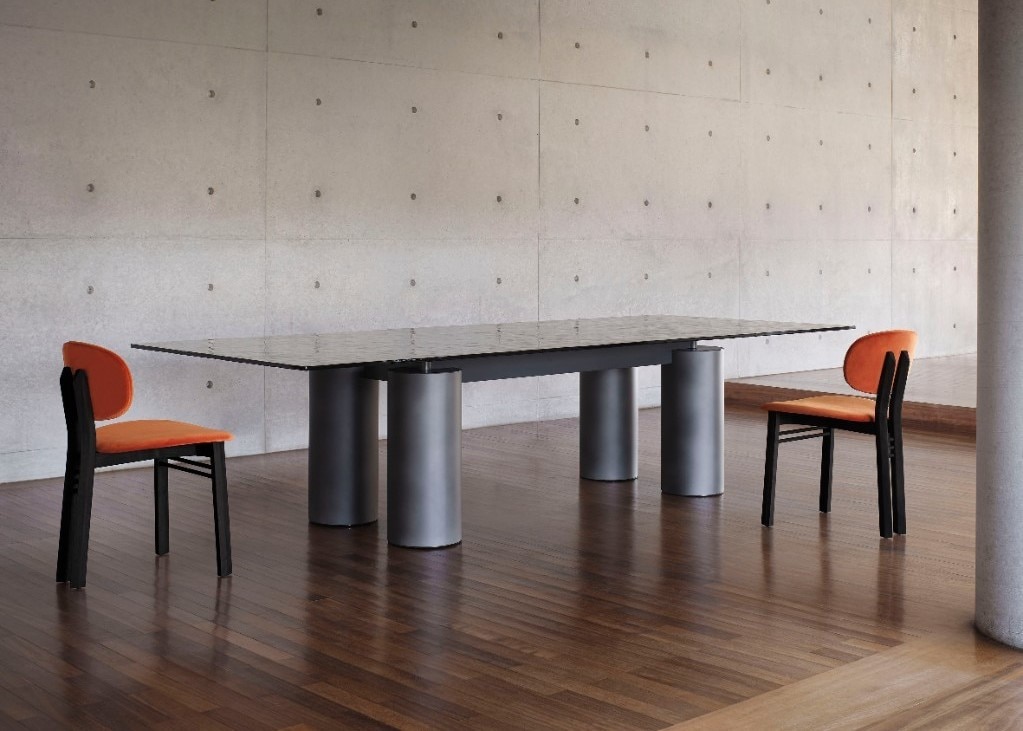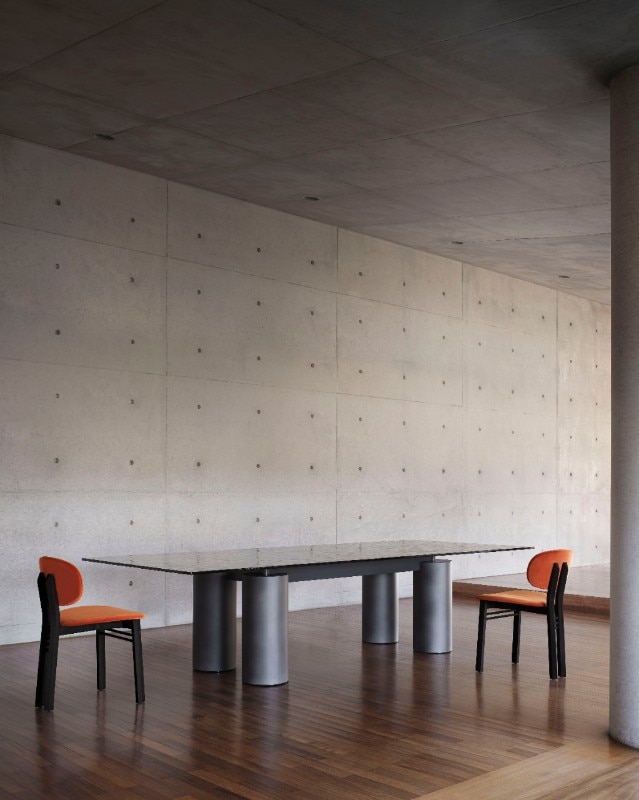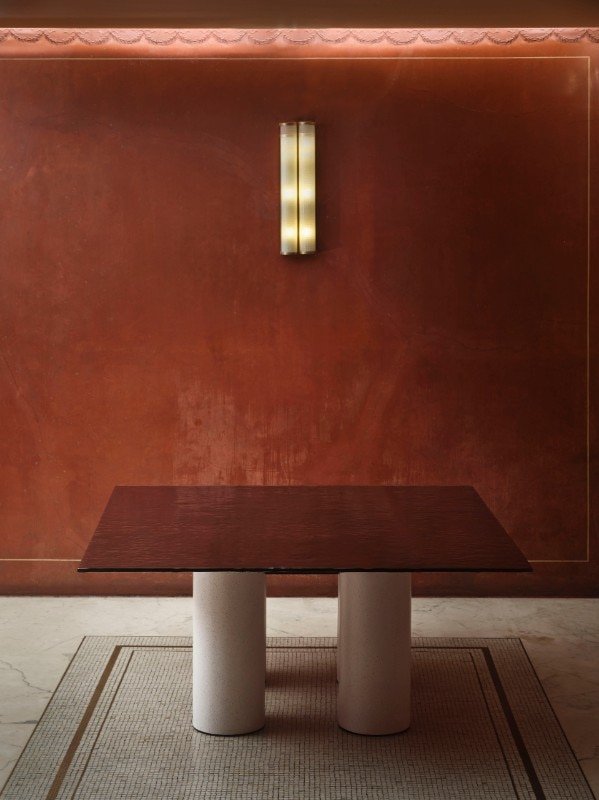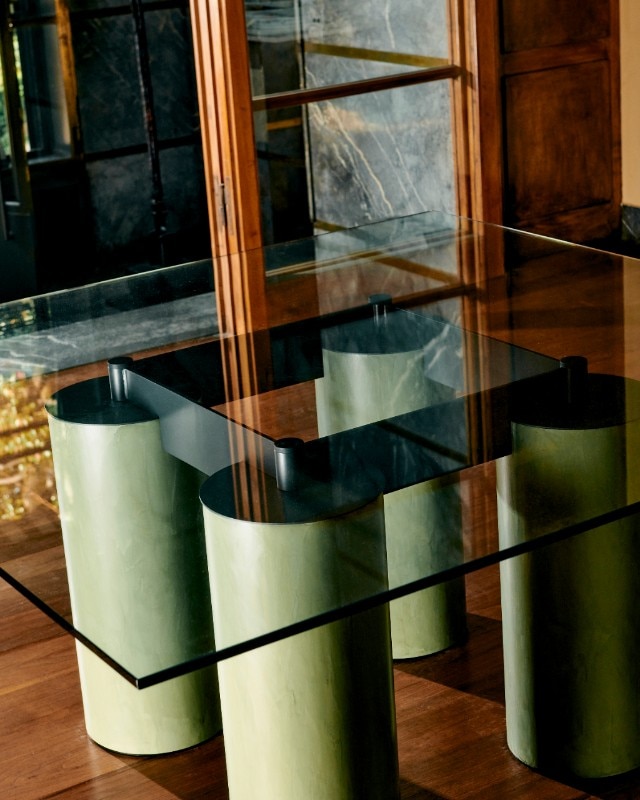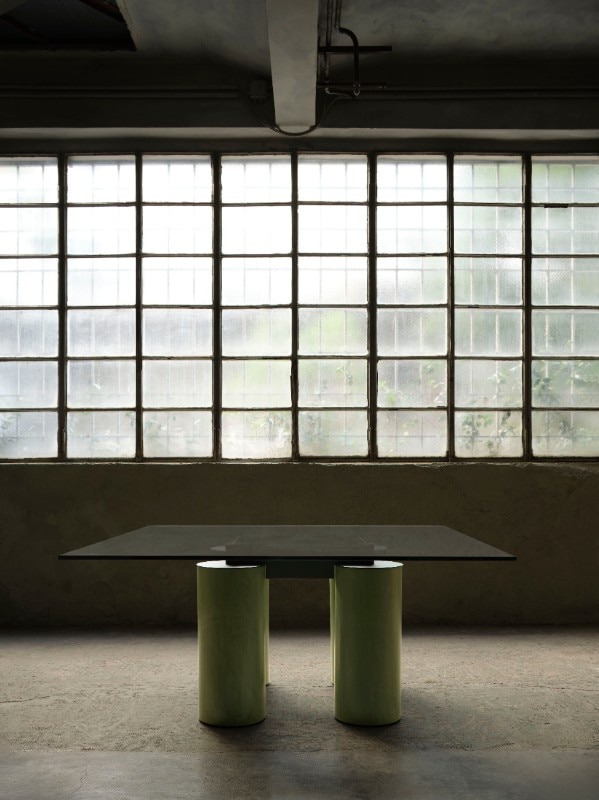On the pages of Domus, while reviewing an exhibition at Milan’s PAC on the work of Massimo Vignelli (1931-2014) and his wife Lella (1934-2016), Gillo Dorfles noted that the creative couple, who had been based in America for years, had been able to transplant to New York “that imagination (in this case rigorous and not muddled) that is so often the envy of Italian design”. In Dorfles’ view, they had honed, shaped and nurtured that quality “without blunting the sharp ‘points’ of their own fantastic universe” (Domus 615, March 1981). A few years after Dorfles’ praise, the sharpness of the Vignellis’ multifaceted creativity was also showcased in their collaboration with Lodovico Acerbis, an entrepreneur with a keen interest in experimental design and a discerning eye for materials and production technologies.
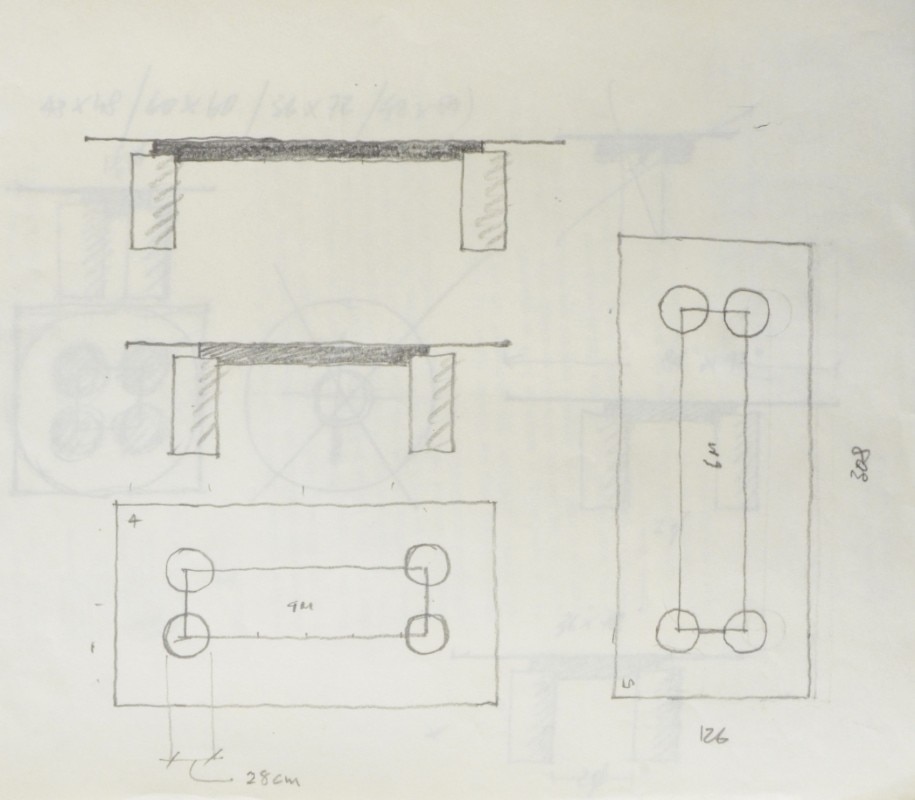
With Acerbis and the collaboration of American designer David Law, the Vignellis worked on Serenissimo, a refined table distinguished by its unique choice of materials and the contrast generated by their unusual combination. The archive drawing illustrates the genesis of a table, which is primarily a graphic composition of just a few shapes. Anchored to the ground like a classical colonnade, the monumental volumes of the metal legs are balanced and lightened by the slender glass top, which can be square, rectangular and also very long.
Serenissimo’s sophistication is conveyed in its recovery of the artisanal technique of encaustic, or Venetian stucco, for the finishing of the legs. In this process, a fine sand plaster is applied with a spatula followed by heated and fused colours, which are inspired by the palette of 18th-century Venetian landscape painter Francesco Guardi. Each base is therefore characterised by fine colours and unique shades, creating an unexpected juxtaposition with the glass top and accentuating its transparency or special finishes. The glass and encaustic metal columns were connected by iron bars that enhanced the material differences and created a decisive break between the solid base and the thin top, which seems to float on the columns.
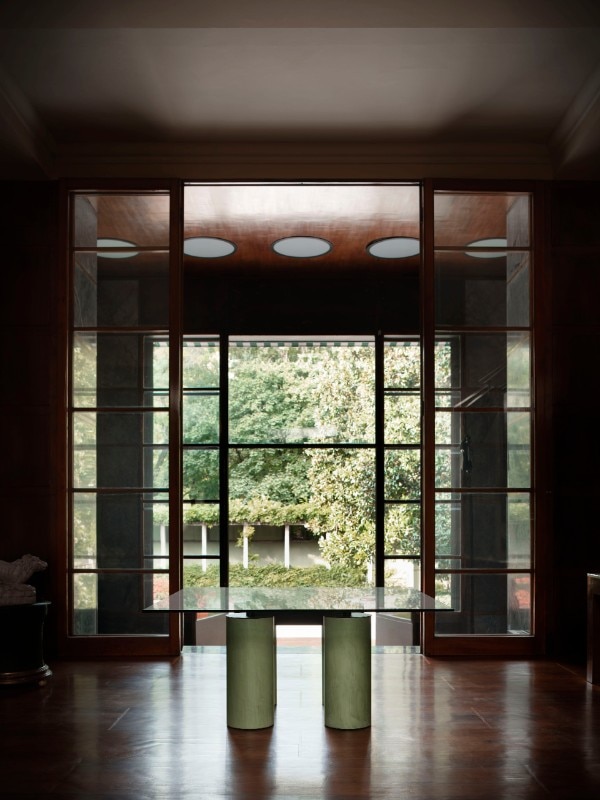
Interest in Serenissimo was immediate and long-lasting, with the table featuring on the covers of design magazines: in November 1985 it opened Modo, followed by Interni in December; in 1986 it appeared in the “pop” layouts designed by Ettore Sottsass for Domus edited by Lisa Ponti (Domus 668, January 1986); and it was pictured on the cover of Japanese magazine Shitsunai in May 1988. Still in the catalogue, Serenissimo is available in square or rectangular versions up to 3.5 metres long, and with customisable top finishes in transparent, opalescent or coloured glass. The metal legs can still be finished in handcrafted encaustic in terracotta, green or white shades


